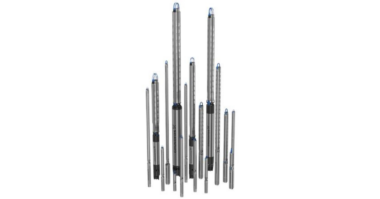Flooding impacts millions of people across North America. Water is needed for life, but it can also take lives. In the U.S. for example, 108 people lost their lives in flood-related deaths and the damage from floods totaled $8.41 billion in 2011 alone.
That year there were record-breaking floods along some of the nation’s largest rivers, the Missouri, Ohio and Mississippi. Two tropical storm systems impacted densely populated portions of the Mid-Atlantic and the Northeast, hurricane Irene and the remnants of tropical storm Lee. These events, happening just over a week apart in late August and early September, combined to produce 37 freshwater flood fatalities and at least $3.9 billion in direct freshwater flood damages from Virginia to Vermont.
In late 2012, flooding impacted millions of people along the Eastern seaboard from Hurricane Sandy. Especially hard hit were New Jersey and New York, where millions lost power and the damage from Superstorm Sandy cost an estimated 110 lives and billions of dollars.
Flooding water not only creates significant damage immediately, it can also have a long-term impact on buildings. The longer water soaks in, the more damage it will cause to structures and everything they contain. Mold is an important health concern and will grow on wet areas and behind walls. With rising waters, sewage can enter living spaces and the sooner untreated water is moved out the better for all.
Experts agree that removing water quickly and as safely as possible is a critical factor in recovery operations following a flood. The National Council for Healthy Housing recommends that standing water be removed as soon as possible. Once the water is out, the building needs to be thoroughly dried and all water damaged articles should be discarded before reconstruction can take place.
Fast water displacement is best done with a mechanical pump. Since most pumps rely on electricity or combustion engine to drive the action that will pull out floodwater, having a power source is critical.
In an emergency situation power might be out and fuel sources are often in limited supply and may be needed to drive other emergency gear. In addition, the National Council for Healthy Housing cautions that to prevent carbon monoxide poisoning, generators and fuel powered pumps should only be operated outside of an enclosed space.
In a flood emergency efficient pumping is needed
The key to moving water from one place to another is energy. But the challenge in an emergency is finding a power source to drive a pump. If the water needs to be pumped out from a basement, or the hull of a boat, it will take extra power to move the water up and out to an area of less concern.
In an emergency where lots of water needs to be moved quickly, only a powered pump will get the job done. Pumps that have a power source can move water fast and in a large quantity and removing water quickly and efficiently is the main goal.
So it’s always a good idea to have a back-up plan that will provide power in an emergency. While water can be moved by gravity in a process called siphoning, this is typically very slow. To drain by gravity the inlet of a hose is dropped into standing water and the hose is stretched out such that the outlet is lower than the inlet. To initiate the flow suction is required at the outlet end of the hose, which can be done by drawn breath. While this may be an acceptable method to empty a fish tank, it’s not a very efficient, fast, or even a safe way to get water moving. This is why a back-up plan should always include the right kind of pump and a safe and easy way to run it.
Centering in on pump design for efficiency
Pump efficiency is another important consideration for any emergency plan. One of the most efficient pump designs for water is a centrifugal pump. Centrifugal is based on a Latin phrase that means “fleeing the center,” which is a pretty accurate description based on what the pump is doing to the water. Centrifugal pumps consist of three main parts; a motor, a volute and an impeller.
The impeller is a disk with specially designed curved blades that push water coming into the center of the impeller outward. The rushing water is collected on the outside of the impeller in a specially designed chamber called a volute which guides it to the pump’s discharge. This is all powered by the motor which spins the impeller.
Manufacturers can produce pumps that perform efficiently under conditions that can vary widely – from low flow rates with high head (or back pressure) to high flow rates with low head by changing the curvature of the blades on the impeller. Another way to think of the head is how high the pump has to push the water, for example a pump designed to pump water out of a well (high head) is hydraulically going to be a lot different from a pump designed to pump water out of a basement (low head).
The pump designed to pump water out of a well should be designed so it’s more efficient at high head and conversely the pump designed to pump water out of a basement should pump efficiently at low head. By zeroing in on the conditions under which the pump is intended to operate designers can ensure that the blades move the water in the mostefficient manner possible. The Evacuator was designed with this in mind
Although the Evacuator is still capable of pumping water at higher heads, it really excels in work environments requiring fast, efficient removal of large concentrations of standing or flooding water. It was designed to efficiently pump out flooded basements, drain ditches, boats and other relatively low head applications.
Selecting an emergency pump for fast dewatering
Centrifugal pumps offer a simple design that seldom jams or clogs, which means little maintenance and upfront investment. They make a good choice for emergency pumping needs.
In an emergency situation for example, a pump might need to be lowered into a confined space, even into an area that can’t be seen or that has debris on top of it. Centrifugal pumps can run dry before they are put in the water, which means they can be lowered into these areas.
Once the pump reaches liquid the spinning impeller will start pumping. This means that centrifugal pumps can be used in places where it would be inadvisable to put other kinds of pumps.
The criteria for selecting a pump to have on hand for an emergency should meet the following requirements:
- Ability to move the maximum amount of water
- Use as little power or energy as possible
- Be rugged in design and function so that the need for maintenance is negligible
- Be compact and portable so they can fit into small spaces
- Be safe and simple to operate in any conditions
A pump that stays calm in a crisis
Developed in response to customer feedback, Xylem’s Rule Evacuator Series is a centrifugal pump product line that meets the criteria outlined above and more. The products are backed by Rule’s 45 years of operational excellence.
The Evacuator Series offers high efficiency portable utility pumps. Designed as an alternative to gas, diesel or A/C electric powered portable pumps, the Evacuator Series excels in environments requiring fast, efficient removal of water. In times when power is scarce and water is high, the Evacuator is just the pump to remove or relocate unwanted water. An innovative power connection allows for direct operation from a vehicle’s 12-volt battery, using two heavy-duty battery clips, and an inline ‘on / off’ switch on the cable itself.
The Evacuator Series comes in three capacity ratings to move water fast: 2000 GPH, 4000 GPH and a sizeable 8000 GPH. The pumps offer a perfect collaboration between size and functionality.
When attached to a running vehicle’s battery the Evacuator draws power directly from the 12-volt battery. A 25-foot cable assembly provides ample reach to a basement or boat that’s flooded. The Evacuator pumps can all run dry for extended periods and the impeller design lets sand suspended in water be discharged along with liquids. It also has an impact resistant strainer to keep larger debris outside of its inner works.
Its rugged ABS plastic housing and bright yellow body make the Evacuator easy to spot. Ideal for dropping into a flooded manhole or other areas where portability and maximum water movement is wanted, the pump’s outlet ports can be three inches wide offering a big water displacement capacity. The powerful Evacuator 8000’s 30-amp motor has a circuit breaker for added protection and reliability.
The Evacuator Series is the portable pump of choice for handling unwanted pools of water in a crisis or anytime.





Comments